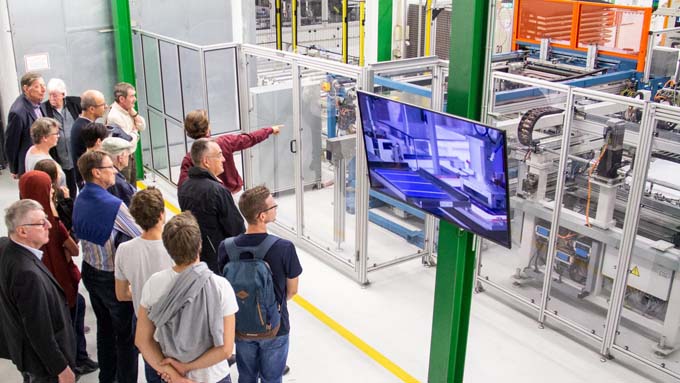Empa puts turbo-hydrogen filling station into operation
On its campus in Dübendorf, Empa has commissioned Switzerland's first hydrogen filling station for passenger cars with a filling pressure of 700 bar. This allows fuel cell vehicles to be refueled in two to three minutes.

The "move" mobility demonstrator on the Empa site in Dübendorf, which is supported by the Swiss Federal Office of Energy (SFOE), Coop and various other industrial partners, has been in operation since November 2015; in addition to an electric filling station, it also offers filling pumps with natural gas/biogas (CNG for "compressed natural gas") and with a mixture of natural gas/biogas and hydrogen (HCNG).
Up to now, pure hydrogen has been available with a filling pressure of 350 bar. This pressure is primarily suitable for refueling commercial vehicles, which have large tanks. With the newly installed 700 bar hydrogen dispenser, Empa is responding to the needs of fuel cell passenger vehicles: compact tanks, the longest possible range and rapid refueling. Hydrogen-powered passenger cars can be refueled within 2 to 3 minutes and have a range of up to 600 km with a full tank. This makes fuel cell vehicles competitive with conventional gasoline or diesel vehicles in terms of refueling convenience at a stroke.
To enable rapid refueling, the compressed hydrogen is precooled to -40°C. This is necessary so that the temperature in the tank does not rise too much due to the compression heat generated during refueling. Via an intelligent infrared interface, the vehicle "communicates" with the nozzle during the refueling process and provides information on temperature and fill level, for example. Empa's new hydrogen filling station is closely linked to the first completely public hydrogen filling station in Hunzenschwil, which Coop Mineraloel AG will open in collaboration with "H2 Energy AG" at the beginning of November.
The key to success: being able to store renewable energies
Hydrogen is quite essential for the integration of renewable energy, which does not always occur when it is needed. It must therefore be possible to store it temporarily. Today, small-scale battery storage is available for this purpose at the lowest level of the electricity grid, and large-scale pumped-storage power plants are available at the highest level of the grid. Increasingly, however, there is a need for technologies that lie in between in terms of capacity and performance and are connected at an intermediate grid level. These include "power-to-gas" plants. These can convert renewable electricity into fuel, such as hydrogen or methane, whenever it cannot be used economically in the electricity market, thus replacing gasoline and diesel.
This makes sense especially for "frequent drivers": Around 20% of the vehicles in Switzerland have annual mileages of more than 20,000 km and together account for almost half of all kilometers driven. Converting such vehicles from fossil to renewable energy therefore requires high ranges, which purely electrically powered vehicles with batteries cannot offer, at least in the near future. Hydrogen vehicles, on the other hand, are also suitable for long-distance journeys. Empa is investigating various uses of hydrogen at the now expanded filling station: directly for work machines, commercial vehicles and passenger cars with fuel cells, and as an admixture to natural gas/biogas for gas vehicles.
Text: Empa









